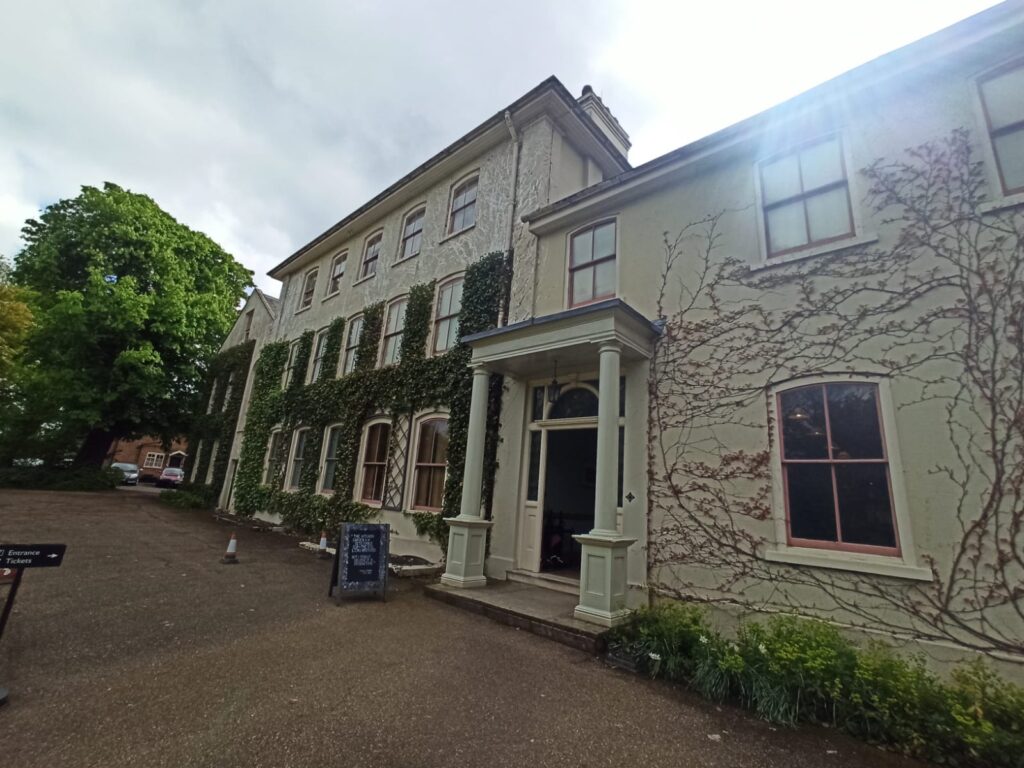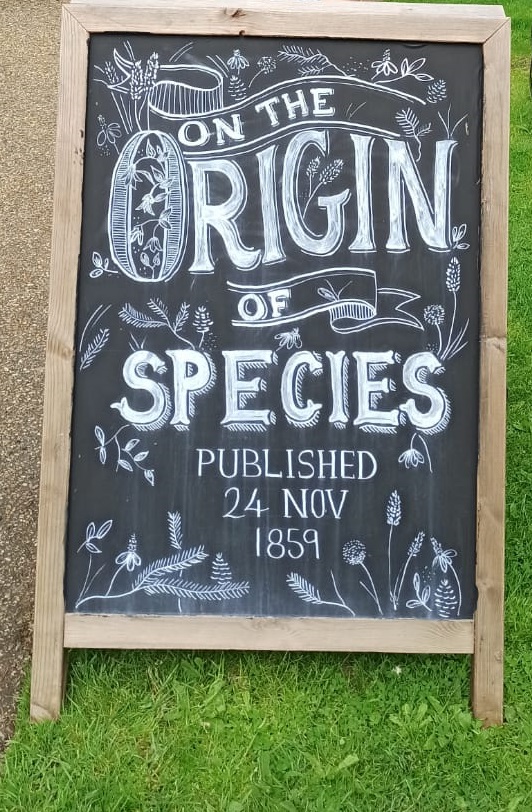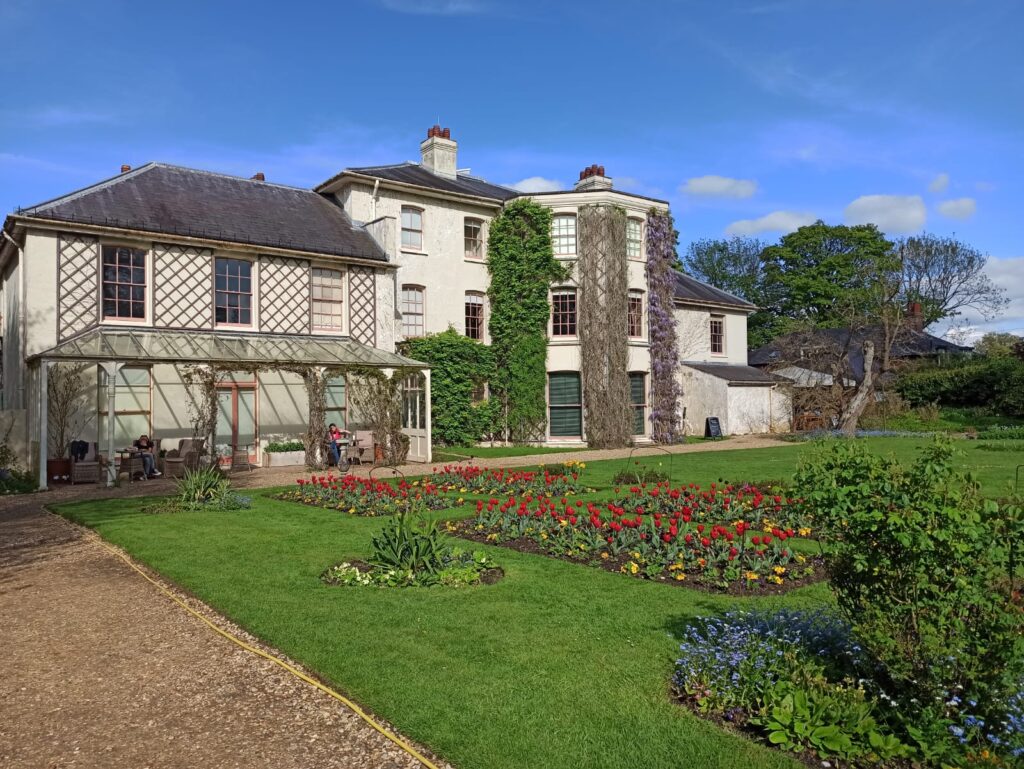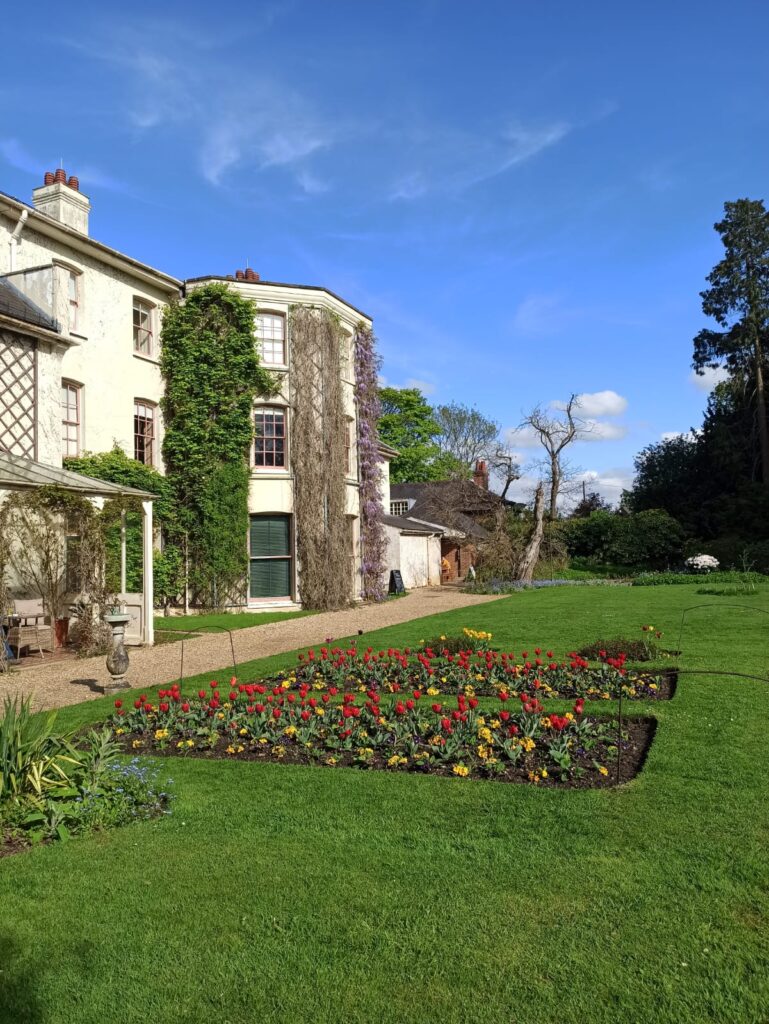Out and about: visiting Charles Darwin’s house
Written by George Peckham, ITP Coordinator
It was a lively weekend in Britain last week as the country celebrated the coronation of our new monarch, King Charles III. Lots of people spent the weekend decorating their homes with red, white and blue colours, attending street parties, or watching the coronation ceremony in London or on TV.
I spent my Sunday of the coronation weekend with a visit to an English Heritage site called Down House, the home famous biologist Charles Darwin. Down House is located on the outskirts of Greater London, just outside the quaint village of Down. The house itself is surrounded by a huge a beautiful garden, which you are able to walk through as well as visiting the house.

The house was once Darwin’s family home, where he lived with his wife and 10 (ten!) children. In 1996, the house was acquired by English Heritage and was restored using funding from the Natural History Museum. On the ground floor, rooms have been restored to how they would have looked when Darwin lived in the house. You can see his study cluttered with books, animal and plant specimens in jars for his research, and the desk and writing chair where we wrote his groundbreaking book On The Origin of Species.

Upstairs on the first floor the rooms have been transformed into an exhibition telling the story of Charles Darwin’s life and work. You can see objects which tell the story of Darwin’s travels around the world, collecting specimens to use as evidence to support his theory of biological evolution. Some highlights of the collection include a first edition print of On the Origin of Species and Darwin’s many journals and notebooks from his voyage around the world.


You are not allowed to take any photographs inside the house, but you can take photos outside in the garden. The exhibition explains that Darwin used his garden almost like his own personal laboratory, where he conducted various experiments to help him better understand the natural world. Darwin is said to have spent hours everyday walking through his vast garden, observing the many experiments he was conducting on the plants and wildlife. He kept birds, insects and grew many flowers to better understand how they all behaved and adapted to their environment.
